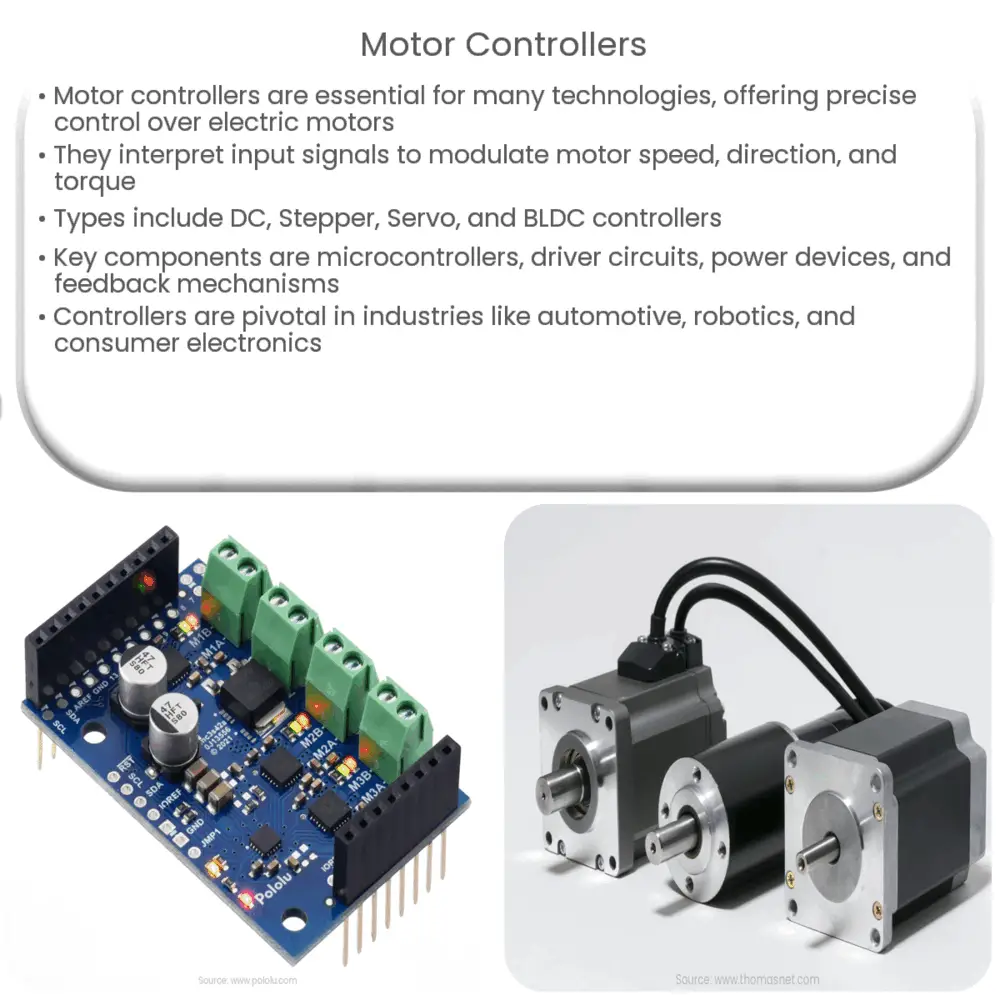Explore the workings of motor controllers, their types, components, applications, and future. Understand their crucial role in modern technology.

Introduction to Motor Controllers
Motor controllers are an essential component of many modern technologies, allowing precise control over various types of electric motors. Whether it’s for a robotic arm, an electric car, or an automated gate, the need for a reliable, efficient motor controller is paramount.
The primary function of a motor controller is to interpret the input signals, often from a microcontroller or a computer, and then modulate power to the motor accordingly. This modulation allows for speed, direction, and torque control of the motor.
Types of Motor Controllers
Components of a Motor Controller
The key components of a motor controller often include a microcontroller, a driver circuit, power devices, and feedback mechanisms:
- Microcontroller: This is the ‘brain’ of the controller, interpreting input signals and making decisions on how power should be applied to the motor.
- Driver Circuit: The driver circuit acts as an intermediary between the microcontroller and power devices, amplifying the signal from the microcontroller.
- Power Devices: These are the components that directly provide power to the motor, usually in the form of transistors or MOSFETs (Metal-Oxide-Semiconductor Field-Effect Transistor).
- Feedback Mechanisms: These components provide data back to the microcontroller about the motor’s current speed, position, and other parameters. This information is crucial for maintaining precise control over the motor.
How Motor Controllers Work
The operation of a motor controller generally involves several steps. The microcontroller receives an input signal, typically as a digital value. This input could be from a user manipulating a control stick, or from a computer program. The microcontroller then translates this input into a specific action for the motor – a certain speed, a particular direction, or a specific position.
The driver circuit amplifies the signal from the microcontroller to a level that the power devices can utilize. These power devices then modulate the power from the power supply to the motor according to the signal from the driver circuit. This modulation can involve varying the voltage, the current, or the duty cycle of a PWM (Pulse-Width Modulation) signal.
Applications of Motor Controllers
Motor controllers find applications in a wide range of industries. In the automotive sector, they control the motors in electric vehicles, ensuring efficient power usage and smooth driving. In robotics, motor controllers are vital for precise movement and operation. In industrial automation, they are used to control the speed and direction of conveyor belts, lifts, and other machinery. In consumer electronics, motor controllers are used in devices such as drones, fans, and computer cooling systems.
The Future of Motor Controllers
The future of motor controllers is likely to be shaped by advancements in power electronics and microcontroller technology. Expect to see more sophisticated controllers capable of handling more complex tasks, increased efficiency, and better reliability. The rise of the Internet of Things (IoT) is also likely to lead to an increase in demand for motor controllers, as more devices become automated and connected.
Conclusion
In conclusion, motor controllers play a crucial role in our modern technological landscape, providing precise control over electric motors in a wide array of applications. As technologies continue to advance, the importance and sophistication of motor controllers are only set to increase. Whether it’s in electric vehicles, robotics, or consumer electronics, the humble motor controller will continue to be a key player in the technology of the future.

